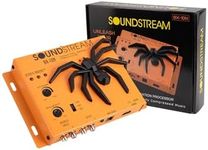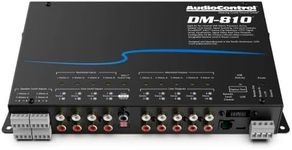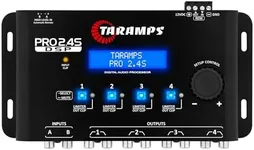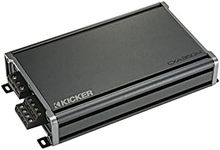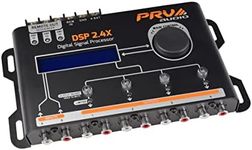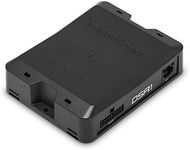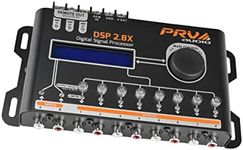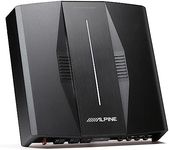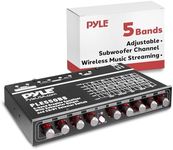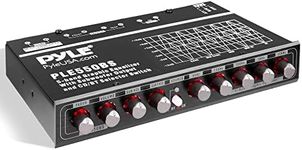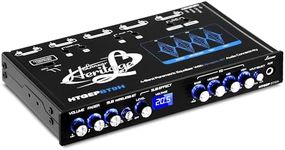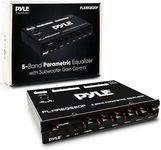Buying Guide for the Best Signal Processor Car Audio
Choosing the right signal processor for your car audio system can significantly enhance your listening experience. A signal processor allows you to fine-tune the audio output, ensuring that you get the best possible sound quality from your car's speakers. When selecting a signal processor, it's important to understand the key specifications and how they impact performance. This will help you make an informed decision based on your specific needs and preferences.Number of ChannelsThe number of channels refers to how many separate audio signals the processor can handle. This is important because it determines how many speakers or subwoofers you can connect and control individually. Typically, signal processors come with 2, 4, 6, or more channels. If you have a basic setup with just front and rear speakers, a 4-channel processor might be sufficient. For more complex systems with additional speakers and subwoofers, you might need a processor with 6 or more channels. Choose a processor that matches the number of speakers in your car for optimal control and sound quality.
Equalization (EQ) BandsEqualization bands allow you to adjust the frequency response of your audio system. This is crucial for tailoring the sound to your preferences and compensating for any acoustic issues in your car. Signal processors can have a varying number of EQ bands, ranging from basic 7-band EQs to advanced 31-band EQs. More bands provide finer control over the audio spectrum, allowing for more precise adjustments. If you are an audiophile or have specific sound preferences, opt for a processor with more EQ bands. For general use, a processor with fewer bands may be sufficient.
Crossover SettingsCrossover settings determine how audio frequencies are divided between different speakers and subwoofers. This is important for ensuring that each speaker receives the appropriate frequencies, which can improve overall sound quality and prevent damage to speakers. Signal processors can have adjustable crossover points, allowing you to set high-pass, low-pass, and band-pass filters. If you have a subwoofer, look for a processor with flexible crossover settings to ensure it receives only the low frequencies. For full-range speakers, adjustable crossovers can help balance the sound across all speakers.
Time AlignmentTime alignment adjusts the timing of audio signals to ensure that sound from all speakers reaches your ears simultaneously. This is important for creating a cohesive and immersive listening experience, especially in a car where speaker placement can vary. Signal processors with time alignment features allow you to delay the audio signals from certain speakers to match the arrival time of sound from other speakers. If you are looking for the best possible sound staging and imaging, choose a processor with time alignment capabilities. For casual listening, this feature may be less critical.
Input and Output OptionsInput and output options refer to the types and number of connections available on the signal processor. This is important for compatibility with your car's audio system and any additional components you may want to add. Common input options include RCA, optical, and digital inputs, while output options can include RCA and speaker-level outputs. Ensure that the processor you choose has the necessary inputs and outputs to connect to your head unit, amplifiers, and speakers. If you plan to expand your system in the future, look for a processor with multiple input and output options for flexibility.
